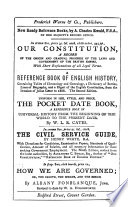 | Francis Walkingame - 1868 - 154 pages
...last term. 3. The number of terms. 4. The equal difference of the terms. 5. The sum of all the terms. Any three of which being given, the other two may be found. The first and last terms and the number of terms given, to find the sum of all the terms. RULE. —... | |
 | Benjamin Greenleaf - Arithmetic - 1871 - 350 pages
...a series? The means? When is a series ascending? When descending ? What five things are mentioned, any three of which being given, the other two may be found ? If the last term had been given and the first required, the process would evidently have been by... | |
 | Horatio Nelson Robinson - Algebra - 1872 - 436 pages
...TKe two primitive equations, l = ar*~l , S—— — 5—, contain the five quantities, a, r, l, n, S, any three of which being given, the other two may be found; for, by substitution of the given values, the result will always be two equations involving but two... | |
 | William Guy Peck - Algebra - 1875 - 348 pages
...in each case is 4. 175. In any geometrical progression, there are five quantities to be considered, any three of which being given, the other two may be found. These quantities are, the first term, denoted by . . . .a, " last term, denoted by ..../, " number... | |
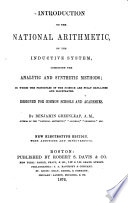 | Benjamin Greenleaf - Arithmetic - 1876 - 344 pages
...series ? The means 1 When is a series ascending 1 When descending ? What five things are mentioned, any three of which being given, the other two may be found ? If the last term had been giver and the first required, the process would evidently have been by... | |
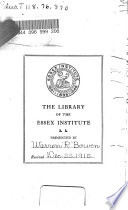 | George Augustus Walton - 1876 - 358 pages
...viz., the First Term, the Last Term, the Number of Terms, the Common Ratio, and the Sum of the Terms ; any three of which being given, the other two may be found. 1JK5. To FIND THE LAST TERM OP A SERIES, THE FIRST TERM, THE RATIO, AND NUMBER OF TERMS BEING GIVEN.... | |
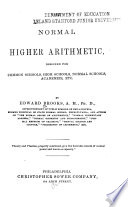 | Edward Brooks - Arithmetic - 1877 - 564 pages
...what is the first term ? Ann. 1024. 864. Since there are five quantities in Geometrical Progression, any three of which being given, the other two may be found, there are twenty distinct cases. 865. The rules for the eight simple cases are expressed in the following... | |
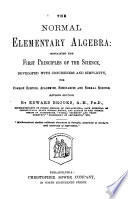 | Edward Brooks - Algebra - 1888 - 344 pages
...that decrease« from left to right ; as 32, 16, 8, i, etc. ill» 7. The Terms considered are five, any three of which being given, the other two may be found. THE FIVE TEEMS. 1. The first term, a ; 3. The number of terms, n ; 2. The last term, /; 4. The ratio,... | |
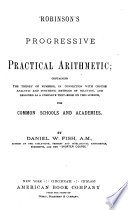 | Horatio Nelson Robinson - 1888 - 372 pages
...the difference between any two adjacent terms. 450. There are five parts in an arithmetical series, any three of which being given, the other two may be found. They are as follows : the first term, last term, common difference, number of terms, and sum of all... | |
 | Charles Davies - Algebra - 1889 - 330 pages
...ratio in each case is 4. 169. In any geometrical progression, there are five quantities considered, any three of which being given, the other two may be found These quantities are: The first term, denoted by .... a. " last term, denoted by . . . . I. " number... | |
| |